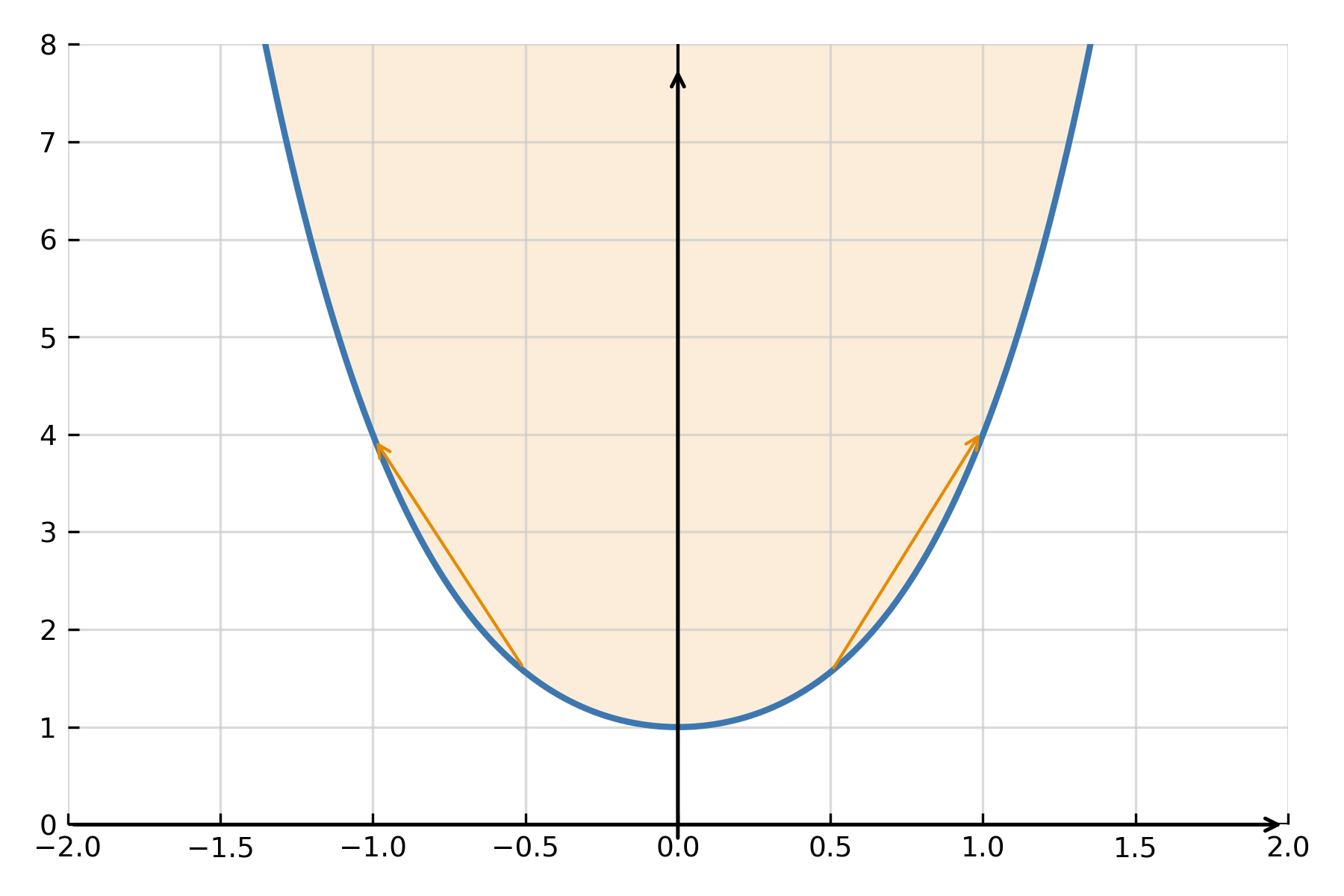Integration techniques
When the basic integration rules are not enough, more advanced methods are used to handle composite functions. The two most important are substitution and integration by parts. They make it possible to simplify complicated integrals by rewriting them into simpler forms.
Substitution
Substitution is used when an integral contains a composite function in which part of the expression can be treated as a new variable. The method is, in principle, the chain rule applied “in reverse”.
The idea behind substitution
If you can identify an inner expression \( \large u = g(x) \), and the rest of the integrand contains \( \large g'(x)\,dx \), you can replace the entire expression with a new variable \( \large u \). Then you integrate with respect to \( \large u \) instead of \( \large x \).
$$ \large \int f(g(x)) \cdot g'(x)\,dx \;=\; \int f(u)\,du $$

Example 1: Substitution of an inner function
Find \( \large \int 2x(x^2 + 1)^3\,dx \)
Let \( \large u = x^2 + 1 \), so \( \large du = 2x\,dx \). Then:
$$ \large \int 2x(x^2 + 1)^3\,dx \;=\; \int u^3\,du \;=\; \frac{u^4}{4} + C \;=\; \frac{(x^2 + 1)^4}{4} + C $$
The substitution thus simplifies the integrand so that it can be integrated directly using the power rule.
Example 2: Exponential function
Find \( \large \int e^{3x}\,dx \).
Here we let \( \large u = 3x \), so \( \large du = 3\,dx \) or \( \large dx = \frac{du}{3} \):
$$ \large \int e^{3x}\,dx \;=\; \frac{1}{3}\int e^u\,du \;=\; \frac{1}{3}e^u + C \;=\; \frac{1}{3}e^{3x} + C $$
The substitution ensures that the inner derivative is handled correctly, making the result consistent.
Integration by parts
Integration by parts is used when the integrand is a product of two functions, where one derivative and the other antiderivative are known. The method comes directly from the product rule in differentiation, applied “in reverse”.
Formula
$$ \large \int u\,dv \;=\; u \cdot v - \int v\,du $$
Typically, you choose \( \large u \) as the function that becomes simpler when differentiated, and \( \large dv \) as the part that is easy to integrate.
Example 3: Polynomial times exponential function
Find \( \large \int x e^x\,dx \)
Choose \( \large u = x \Rightarrow du = dx \) and \( \large dv = e^x dx \Rightarrow v = e^x \). Then we get:
$$ \large \int x e^x\,dx \;=\; x e^x - \int e^x\,dx \;=\; e^x(x - 1) + C $$
Example 4: Product of \( \large x \) and cosine
Find \( \large \int x \cos x\,dx \)
Choose \( \large u = x \Rightarrow du = dx \) and \( \large dv = \cos x\,dx \Rightarrow v = \sin x \):
$$ \large \int x \cos x\,dx \;=\; x \sin x - \int \sin x\,dx \;=\; x \sin x + \cos x + C $$
Choice of method
Substitution is used when an inner function appears together with its derivative, while integration by parts is used when the integrand is a product and no direct substitution works. The two methods complement each other and together cover most standard integrals.
Summary
These integration techniques extend the basic rules. Substitution allows you to handle composite functions by introducing a new variable, while integration by parts handles products. Together, they make it possible to solve complex integrals systematically.